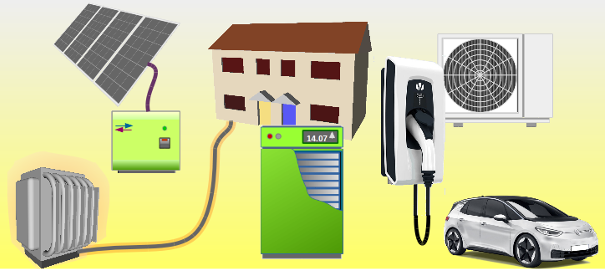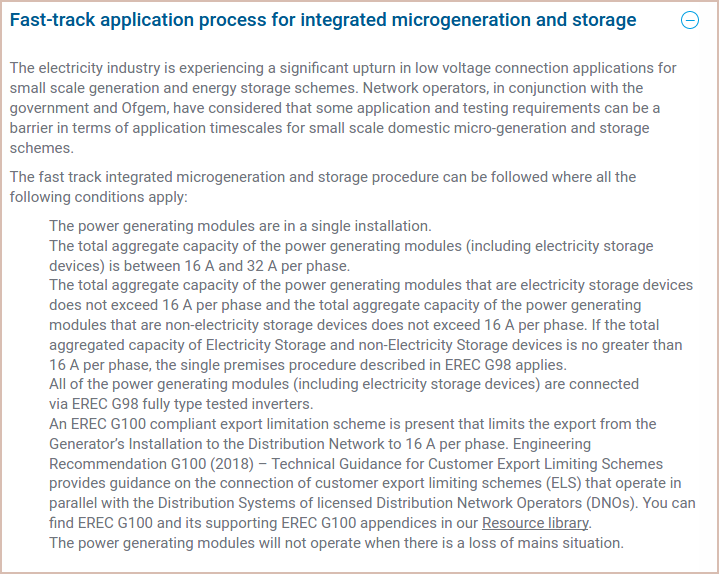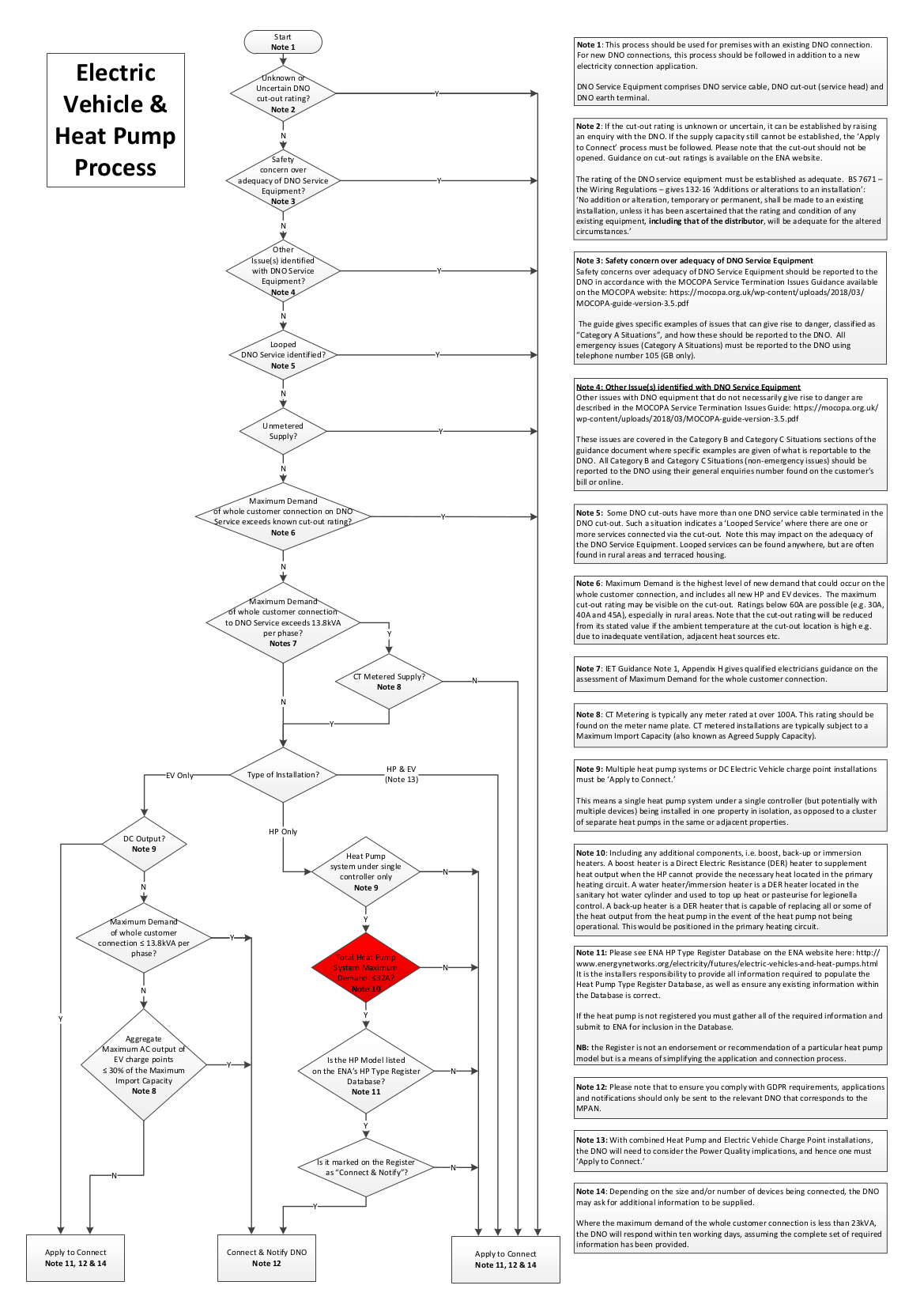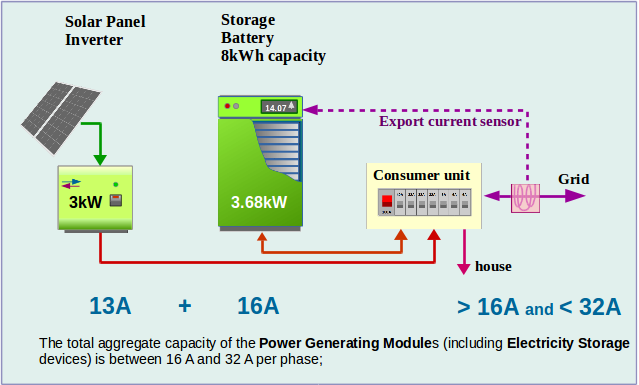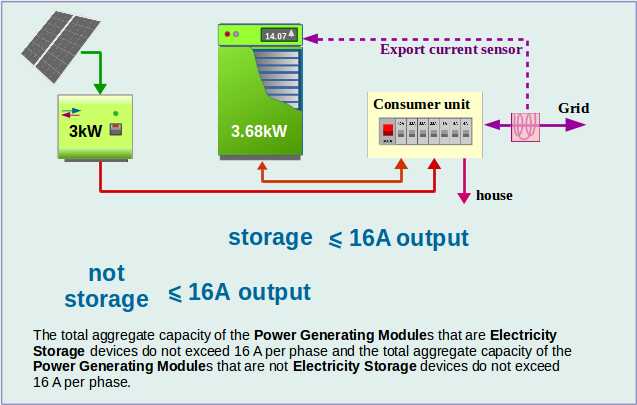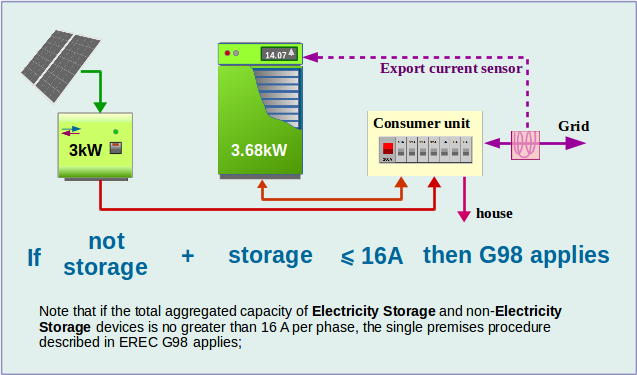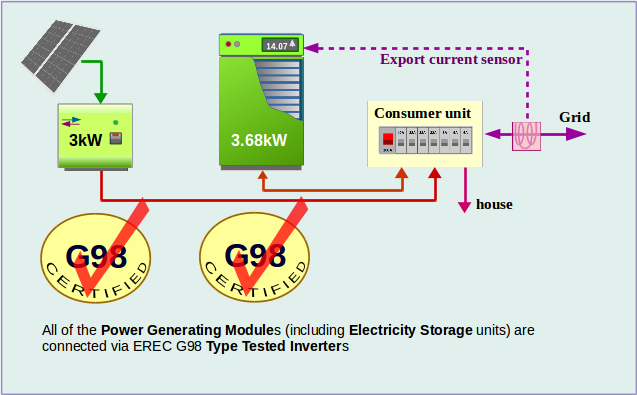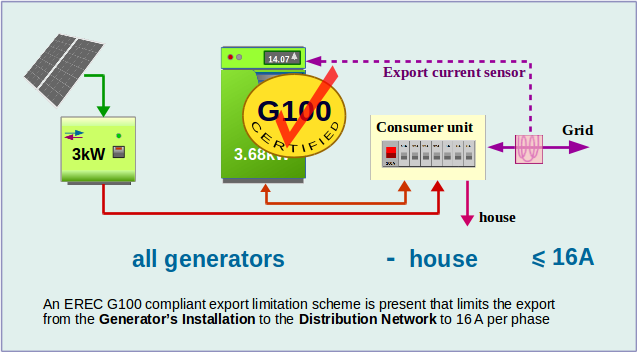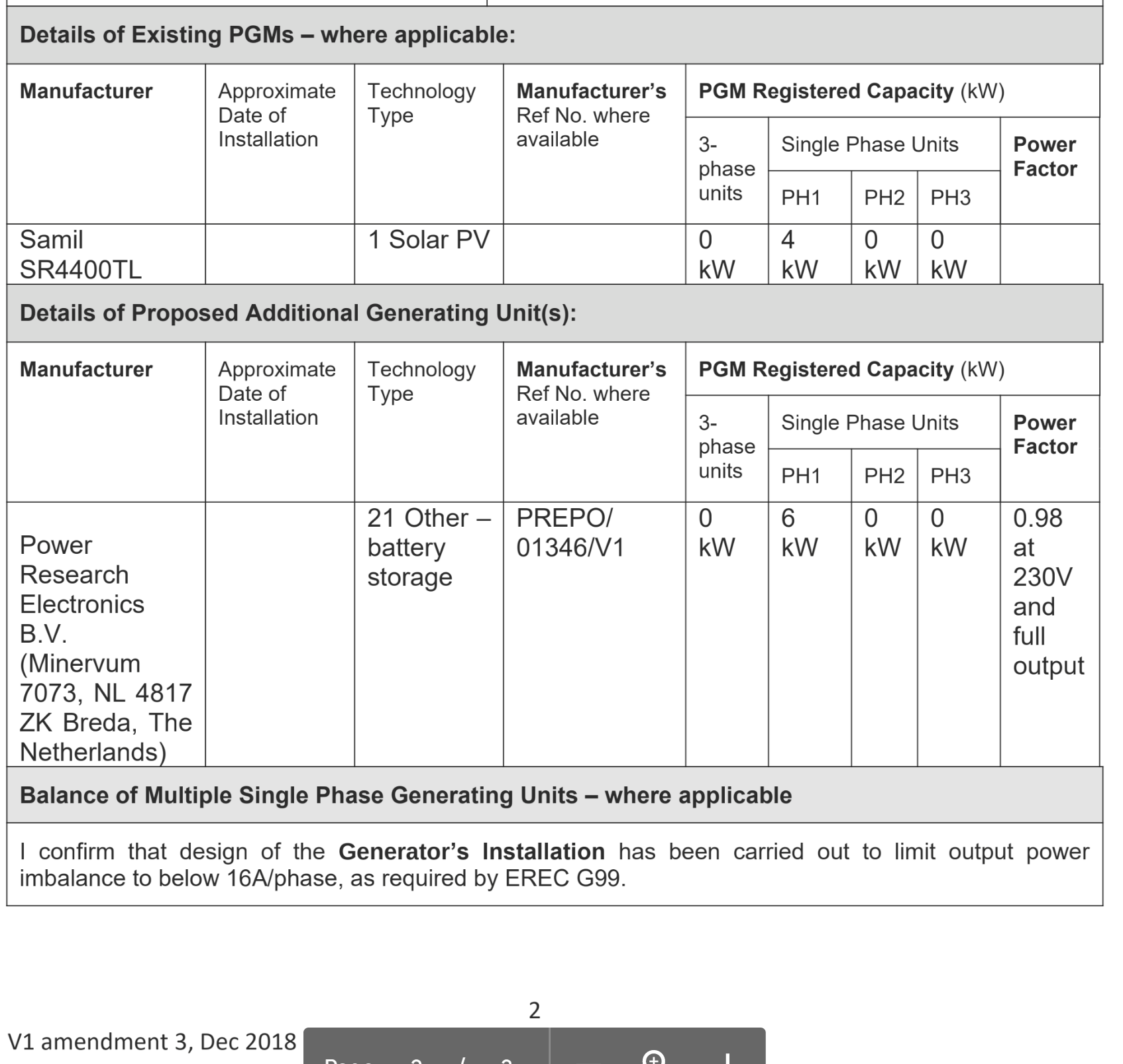Updated on 19/05/25 by Chris_OVO:
One of our community members has detailed some of the certification needed when exporting energy to the national grid. It’s worth mentioning here that these certifications are subject to changes so we’d recommend getting in touch with your local Distribution Network Operator (DNO) to check the current requirements.
The regional Distribution Network Operators (DNOs) must be contacted when permission is required for certain higher-power devices which import or export electricity. These include PV Solar Panels, Home Battery Storage, Wind Turbines, Electric Vehicle chargers and Heat pumps.
Export :
G98 (was G83); a single device which exports no more than 16A per phase (3.68kW) to the Distribution Grid.
G99 Fast Track; required for sites where two or more export devices are installed, but only one exports to the Grid. The other device(s) therefore have G100 accreditation (see below).
G99 Full; required for sites where more than one device can export to the Grid. Note that the assessment procedure is not the same as the G99 Fast Track calculations.
G100; a site or device generating more than 16A per phase, but which incorporates some form of export limitation. The limit must be declared even if it is Zero (ie all the energy is to be used within the site).
Import : covers Low Carbon Technology (LCT)
Electric Vehicle charger. A domestic charger taking more than the power available from a 3-pin 13A socket outlet (3kW).
Since most domestic EV chargers are rated 7.5kW and will typically be used for a period of 2-8hours, there is an obvious drain on one-phase passing through the local sub-station transformer. Transformer imbalance causes energy-loss and is of concern to the DNO.
Heat pumps. Ground Source Heat Pumps (GSHP) or Air Source Heat Pumps (ASHP) taking more than 3kW peak.
The load imposed by a Heat pump is usually lower than an EV charger, and spread across the entire day. However, it is more likely to be operating during the early evening period of peak-demand. Heat pumps are known to cause voltage fluctuations (flicker) and create harmonics on the Grid. The DNO is required by Ofgem to minimise losses from such variations.
See Balancing the Grid tutorial.
See further down for more information on obtaining Import consent:
Export consent:
1: When can the G99 Fast Track process be used?
Assume a site which requires an Inverter delivering power from Solar Panels and a separate Storage Battery, both of which have a Grid connection.
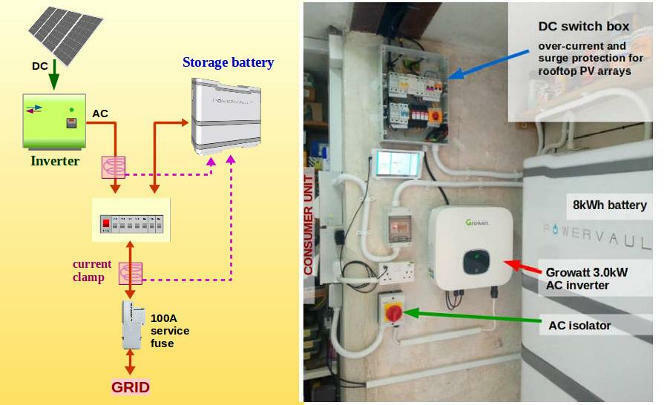
Here is the Fast Track guidance from the Electricity Networks Association (ENA), which is the body representing British DNOs.
www.energynetworks.org/operating-the-networks/connecting-to-the-networks
This complex set of criteria for G99 Fast Track applications is recreated in pictorial format below.
2: G99 - Full application
G99 is most commonly used by community and commercial organisations who require a 3-phase connection to the Grid.
G99 also applies to single-phase domestic sites where
- there is more than one device which can export
- the level of export is to be greater than 3.68kW (16A)
The DNOs use a computer-modelling system which requires a number of parameters to be defined that are local to that site. The software outputs a number which is the percentage of voltage rise if the devices were to be approved.
The parameters required include:
- the cable length between the site and the sub-station transformer
- the cable characteristics; its cross-sectional area and composition
- the number of houses between the site and the transformer
- the transformer rating and its free capacity
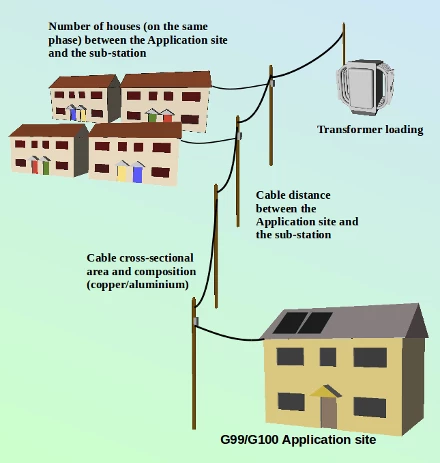
The principle difference between the G99 and its Fast Track equivalent is the way in which the export potential of the on-site devices are calculated. This means it is possible for a site to be granted certification under G99 Fast Track, but to be refused if a Full Application were made.
3: G100 - devices with export limitation
The G100 standard is most commonly referred to for the installation of PV Solar Panels on a house with an East/West facing roof.
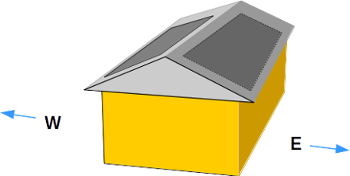
The total output of both the East and West solar arrays can be higher than the permitted 3.68kW (16A) because the sun can’t fully fall on both sides of the roof simultaneously. Instead, the inverter is equipped with Export Limitation software. Such an inverter is certified to G100, which the DNO therefore accepts for grid-connection. The 3.68kW limitation cannot be exceeded, even when both arrays are in sunlight at midday.
The key point for G100 is that it contains accredited Export Limitation technology for whatever current is specified - usually 16A per phase.
Some Storage batteries have their limit set to zero.
When the export limit is zero, there cannot be any electricity sent to the Grid because this is locked into the design of the battery. All the energy stored can only be used within the house. A current-clamp attached to the Live supply cable provides the measurement which gives this assurance.
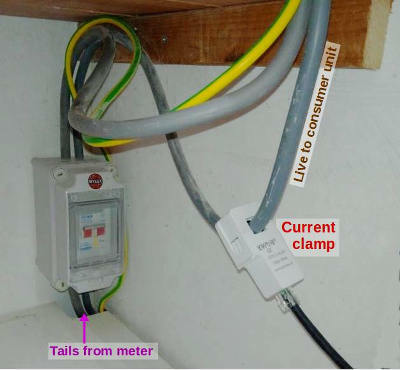
Import consent:
A DNO cannot refuse you a connection to operate a high-current device. However, they can insist on an upgrade to your Service Fuse and/or its cable connection to the 3-phase supply in the road if that is inadequate to support the increased load.
Additionally, a DNO can request a financial contribution towards network infrastructure upgrades where your connection is deemed to impose a significant additional load. Typically this might be a charge of £1000 - £3000.
Guidance for the connection of Low Carbon Technology to the Distribution Network have been laid down by Electricity Networks Association. A single Flow-chart shows the required procedure for an EV charger, a Heat pump or both.
Either click on the above image to open it up, or download the chart as a PDF from the ENA’s Resources Library.
Applying to your DNO for Low Carbon Technology
The uptake of EVs and Heat pumps is happening faster than the application process can be streamlined.
Some DNOs, such as Western Power Distribution, have one web-page for EV Chargers, and a different one for Heat Pumps. Each application has a form which can be downloaded and then emailed to WPD, although this is only available in Microsoft’s DocX format at present.
In contrast, UK Power Networks in SE England have developed an online application system called Smart Connect. There are a few circumstances which make the online portal unsuitable, but it can cope with the majority of LCT Applications speedily. Here’s the link signposted from their advice page about Heat pumps
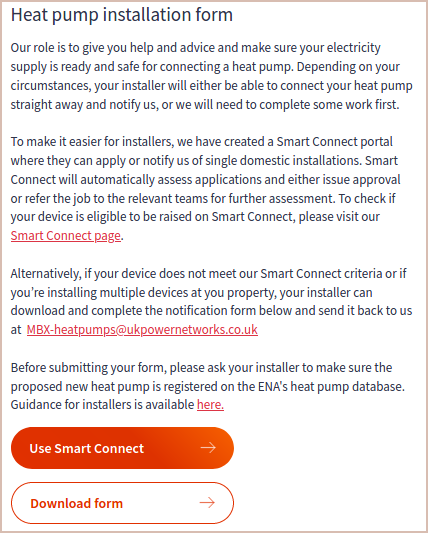
All Grid connections of EV chargers and Heat pumps must be notified, although this can sometimes occur after they are installed and commissioned (known as “Connect & Notify”). Check the Flow-chart above.
If you don’t know who your DNO is, then the ENA provides a web-page into which you can enter your Post Code.
They also retain a downloadable list of Network Operators’ contact details for EV applications. This includes information on the ten Independent Operators, who are increasingly responsible for electricity distribution on new housing developments.


